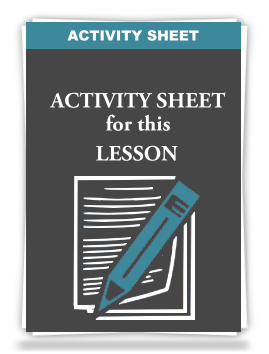- Home
- How I Help
- The Interest Step: Capturing Interest Through Consultative “Stacking-N-Linking” Questions for Fast-Forward Selling & Relationship Building? [ARTICLE]
The Interest Step: Capturing Interest Through Consultative “Stacking-N-Linking” Questions for Fast-Forward Selling & Relationship Building?
The difference between an accomplished selling professional and someone struggling, can be observed in how the prospect/customer is engaged through the art and science of powerful questions designed to pull them together, establish relationship, build a conversational interaction based upon chronological sequenced questions with psychological basis, to determine the prospect/customer’s exacting needs and how best they can meet those needs.
Many times, you may notice that you get into a hurry and arrive at the “Solution Presentation” step of the selling process, without thoroughly identifying the potential buyer’s needs and capacity to purchase those solutions that you may offer to them.
Knowing how to gain the confidence of that other person and ask relevant, thoughtful questions and make that appear to be conversational takes work.
Remember, first you must sale yourself, your integrity to the other person, and establish a reason for them to trust you and want to engage you. Then you can discuss their deeper needs and position yourself to present your potential solutions for their consideration!
The questions that can be utilized to identify the prospects/customers “Interest” level in your organization or the sales professional themselves, should be open-ended in nature to draw out of the prospect/customer a volume of initial information. The more the conversation engagement continues, the professional sales person may begin to tighten up the questions used (transition from open-ended to closed-ended questions) and begin qualifying information, which they are receiving to enable them to determine how best to meet their needs.
- 1. Vetting questions that allow you to qualify and thus de-qualify suspects faster, so you can concentrate on qualified Prospects faster.
- 2. Open-ended questions seek to solicit volume data and gain conversation participation on the part of the prospect/customer with the sales professional. Some of these open-ended questions, which can’t be typically answered with a single word could be to simply follow the 5-W and 1-H formula we were all taught in K12:
- 1. Who’s
- 2. What’s
- 3. When’s
- 4. Where’s
- 5. Why’s
- 6. How’s
These same question starters used as open-ended questions can also be used to solicit limited amounts of information by prefacing them. The preface directs the prospects/customers mind to provide precise and specific information. There may at times be a need to follow up a open-ended questions with closed-ended question to confirm information and get clarification of information.
- 3. You can also use “Closed-Ended” questions that are designed to get targeted information, limited information, and/or clarification to previous information. These are great when a prospect/customer may become too talkative. Some of these closed-ended questions and preface statements may sound like: Specifically, who/what/when/where/why/how
- 4. You can strategically use questions to probe for more information, to uncover additional selling opportunities and to uncover additional needs of the prospect/customer. You can evaluate the types of questions that may be used to gather valuable information and the chronology in which they should be used to gain the greatest amount of information.
Questioning should also match the prospects/customers interest, knowledge and background levels. The sales professional would want to increase the intensity of the questions and word selection with some contacts and loosen up dramatically with others. Remember, it is the purpose of the “Interest” step of the selling process to determine the specific needs of the prospect/customer and then determine if there is a way to meet those needs.
Recognize that within the scope of the questions that you may need them to ask to best represent your organization, there are only three core questions that must be address at this third step in the selling process:
… Adjust these questions to sound most relevant given the context of what your sales professional represents …
Determine if there is a need for what you offer. If not, terminate the sales process! Determine if there is a capacity to pay for your offer. If not, terminate! Determine if there is a time line for acquiring what you offer. If none and none are to be set, terminate the sales process!Through the questions and observations that the sales professional engages in at this step in the selling process, they should be looking for indications for the “Primary Interest” levels of the potential buyer and indications of potential future “Interest” levels for additional selling opportunities.
Use those words in this questioning or interviewing step of the prospect/customer, “Mr./Ms. Prospect/Customer, what are you primarily interested in?”
By asking powerful, thoughtful questions the sales professional will be able to have a meaningful dialogue and more concise “Presentation” interaction with their prospect/customer.
Another powerful way to visual how to engage your prospect and customer, keep chronological focus so as to fall into the trap and case of “ADD-conversation” where you are all of the place, easily distracted and rush to talk about YOU without getting to know THEM, use the Stacking-and-Linking conversational model.
By positioning yourself through consultative questions, you are working to build trust between you and the other person, then you are working to identify the other person or party’s needs. There needs will be Immediate Needs, as well as Intermediate and Long-Term Needs. Your questions should be designed to uncover where the needs are that you can solve and be a partner in solutions.
I was taught many years ago way a powerful way to anchor in my head a simple stack of images, one balancing upon the top of the next, and each corresponding to types of questions and information needed in pursuit to building lasting relationships and getting a better understanding of the other person. Instead of paining over trying to remember a script of questions, as selling and life does not work this way, however it does accelerate forward based upon what you know and how you can leverage that knowledge forward. And the Stacking-and-Linking Model accelerates you forward fast.
So here is how the model could work as a simple conversational model.
- 1. Visualize from the ground (bottom) upward (top) a stack of images
- 2. Then we will link to each image, kinds of questions or purposes one should gain in meeting a new suspect-prospect or engaging a customer at a deeper level
- 3. This allows you to chronologically and sequentially conversationally engage another person and gain valuable insights for addressing the other persons immediate, intermediate and possible long-term needs as no one else may achieve
With this Stacking-and-Linking Model, you can create one for any demographic, vertical market, deliverable’s you represent, for just about any need you have. You can keep mental control of a conversation with another person by having a mental map to follow, and when your conversation stays off subject or purpose, this Stacking-and-Linking Model will serve you well, in giving you a reference point to where you last were and where you need to guide the conversation back to.
So here is a “conversational” Stacking-and-Linking Model for use socially or in meeting another person in a professional setting, consider this image gram and purposes:
STACK IMAGE
And, now YOU
A GOAL POST (balancing atop of that Club)
A GOLF CLUB (Coming out of the top of the Pen)
A Fancy Writing PEN (coming out of that House)
A HOUSE (on top of that image)
A MAILBOX
PURPOSES/QUESTIONS
Now inject how you intersect with them based upon the new gained insights from these image-triggering informational gaining insights, questions, conversation
Now transition in GOAL questions, needs, where they are going in their vocation, etc.
Inquire about what they do for fun, hobbies, etc.
Discuss what they do, position, title, longevity there, etc.
Ask where they live, family, look for possible connection points here for conversation
Firm handshake, don’t let go until get, hear and say back the other person’s name
You can take this concept to a more serious business modeling level as well, with a planned out conversational stack of images that will prompt you to slowly move the conversation forward, by gathering conversationally chronologically powerful informational targets. Here is a Stacking-and-Linking Model that I have used for more than two decades as a universal model that allows me to gather information first with Stacked Images that I then Link to purposes, behaviors and questions.
- 1. Notice the first images below are all about getting to know the Prospect or Client.
- 2. Then the images chronologically push me to find out about Needs and Prospect/Client Problems.
- 3. Last images drive me to explore and discuss Payoff/Solution conversations.
Another

MONEY =Payoff and presenting a solution
SHOVEL = Dig with more Q&A as appropriate
MEAN DOG = What would it mean to not have that problem?
CHAIR = Get them into the conversational chair
P?I = Would you Primarily Interested in?
GOAL POST, BALL & 3-TAGS = In looking at my solution (ball = feature statement), would you Primarily Interested in Benefit 1, 2 or 3 (the tags represent 3 associated benefits to your feature statement)?
FROWNING FACE = Frustrations or challenge questions to their status-quo?
CROSS SWORDS = What’s not working questions?
ICE CREAM CONE = What do you like most about your present deliverables being received or vendor relationship or etc.?
LONG CIGAR = Are longevity questions from anything gained from the DESK?
DESK = Are questions about their role, title, capacity, background, experience, their background DNA ...?
DESK = Gain their name, firm handshake, fixate on that before proceeding upward and forward, exchange business cards here for reference while
talking ...
The difference between an accomplished selling professional and someone struggling, can be observed in how the prospect/customer is engaged through the art and science of powerful questions designed to pull them together, establish relationship, build a conversational interaction based upon chronological sequenced questions with psychological basis, to determine the prospect/customer’s exacting needs and how best they can meet those needs.





